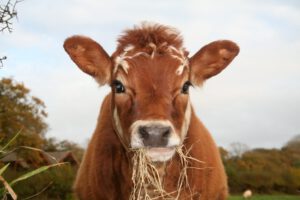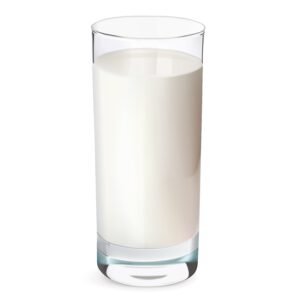Consider the cow, and this humble herbivore’s contribution to the human story.
We’re not just talking burgers and ice cream, archeological evidence suggests that cows were likely first domesticated from aurochs (extinct wild oxen) as long as 11,000 years ago when farmers used their milk to make cheese and yogurt.
Nutrient-rich with plenty of vitamin D for the sun-starved in Northern Europe, milk was a kind of superfood of the Bronze Age.
But new research suggests that it took a long time before Europeans could actually benefit from this potent potable.
Looking at DNA samples from the remains for more than 100 individuals who lived in Eurasia from 3,000 to 5,000 years ago, researchers in Norway found that it took a surprisingly long time before Europeans could tolerate milk.
The study looked at much more than whether those early Europeans could tolerate dairy, and focused more broadly on a wide variety of physical and physiological traits including hair thickness, height and skin color.
But the DNA samples indicate that those early Europeans were mostly lactose intolerant, suggesting that even though they had domesticated cows at the time they were unable to digest raw milk as adults. The exception appears to be among the Yamnaya, a group of people who migrated into Northern Europe from an area near the Altai Mountains in what is now central Russia. Researchers speculate that natural selection favored this trait, giving those with it a rich source of nutrition that could sustained them during times of famine when harvests failed.

Intolerant, even today
Most people are actually lactose intolerant as adults. Only about 35 percent of people worldwide can digest lactose beyond the age of about seven or eight.
The numbers tell a deeper story when demographically divided. While the majority of people of European ancestry can tolerate milk into adulthood, only a small minority of people of Asian ancestry can. Among 23andMe customers who consented to research only about 16 percent of those of European ancestry reported that they were lactose intolerant compared to about 85 percent of people of Asian ancestry.
So what gives?
There are a number of theories about why there are differences among people of different ancestry, and a recent study of ancient Northern European DNA suggests the ability to digest dairy is a relatively new phenomena.
Drinking milk is a problem for most adults. It contains high amounts of a sugar named lactose. As children, we all produce lactase, an enzyme that allows us to break up lactose in our mother’s milk. As we grow older lactase levels go down, making it harder for adults to breakdown the lactose sugars and causing gastrointestinal “discomfort.”
In populations with domesticated cattle, however, there may have been an evolutionary incentive to being able to drink milk as adults and several populations – including populations in Northern Europe – developed genetic variants that enabled adults to continue to breakdown lactose into adulthood. This genetic variant offered a likely evolutionary advantage because milk is nutrient rich, plentiful, and cleaner than many sources of water. In times of famine it offered an alternative source of food for those who could tolerate it.
In the book 10,000 Year Explosion: How Civilization Accelerated Human Evolution, anthropologists Gregory Cochran and Henry Harpending called humans with this variant “mampires,” because it allowed people to feed on the milk of other animals. It’s a clever term, but maybe with a little darker connotations than necessary. As the anthropologist John Hawkes noted in his blog, milk from domesticated animals is a much more efficient use of farm animals than raising them for meat. In places in Europe, Arabia and in parts of Africa where cold or arid climates made consistent yields from farming grain difficult, milk was a good alternative source of nutrition.



